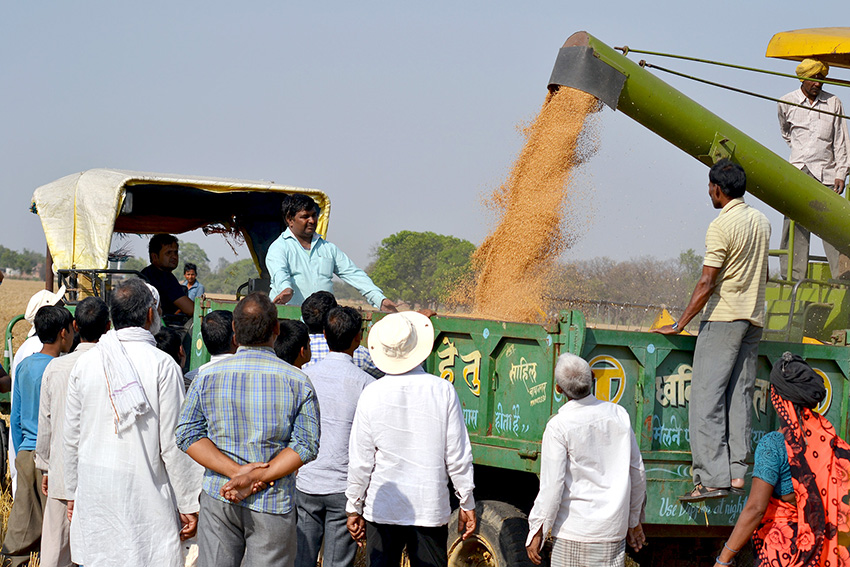
Growth rates of staple crop yields in South Asia are insufficient to meet the region’s projected demands. Forty percent of the world’s poor live in South Asia, and the area comprising eastern India, Bangladesh, and Nepal has the world’s largest concentration of impoverished and food insecure people. At the same time, resource degradation, declining labor availability, and climate change (frequent droughts and rising temperatures) pose considerable threats to farming system productivity and rural livelihoods. By 2050, 30% of South Asia’s wheat crop is likely to be lost due to higher temperatures, experts say.
A CIMMYT-led initiative, the Cereal Systems Initiative for South Asia (CSISA), has been working in this region since 2009 to sustainably enhance the productivity of cereal-based cropping systems and improve the livelihoods of millions of smallholder farmers. The U.S. Agency for International Development and the Bill & Melinda Gates Foundation recently approved Phase III of CSISA, which will run from December 2015 to November 2020. Building on the momentum and achievements of Phase I and II, Phase III will work to scale up innovations, strengthen local capacity, and expand markets to support the widespread adoption of climate-resilient agricultural technologies in partnership with national partners and key private sector actors.
“CSISA has made its mark as a ‘big tent’ initiative that closes gaps between research and delivery, and takes a systems approach that will continue to be leveraged in Phase III through strategic partnerships with national agricultural systems, extension systems, and agricultural departments and with civil society and the private sector,” said Andrew McDonald, CSISA Project Leader, CIMMYT.
Implemented jointly with the International Rice Research Institute (IRRI) and the International Food Policy Research Institute (IFPRI), the four main objectives of Phase III are disseminating technology, mainstreaming innovation into national systems, developing research-based products, and reforming policies for faster technology adoption.
In India, Phase III will continue in Bihar, Eastern Uttar Pradesh, and Odisha. In southern Bangladesh, the “Feed the Future” area will be prioritized along with a new geographic focus in the northwest. In Nepal, engagement in the mid- and far west will be strengthened, and work will begin in the central development region where the private sector is poised for rapid growth.
According to McDonald, CSISA has contributed to major outcomes in the eastern Indo-Gangetic Plains, such as rapid uptake of early-planted wheat, the use of zero-tillage seed drills, and long-duration, high-yielding wheat varieties in eastern India. Through strategic partnerships, CSISA aims to benefit more than 8 million farm households through labor-, cost-, and water-saving technologies and increase agricultural yields and income by 2020.
 Nutrition, health and food security
Nutrition, health and food security